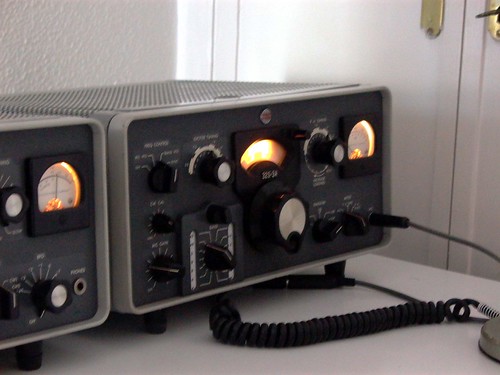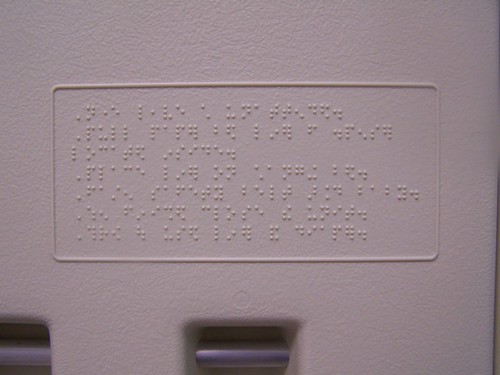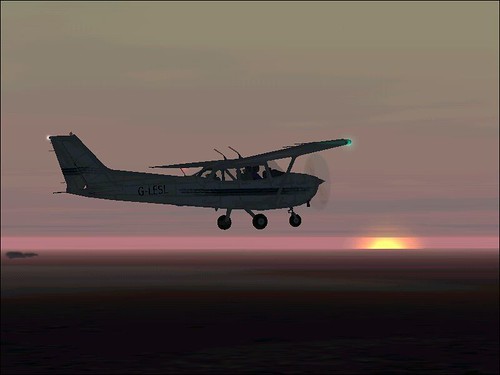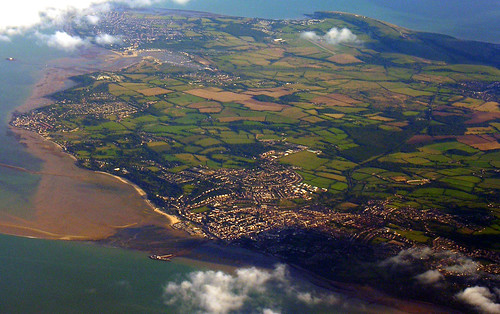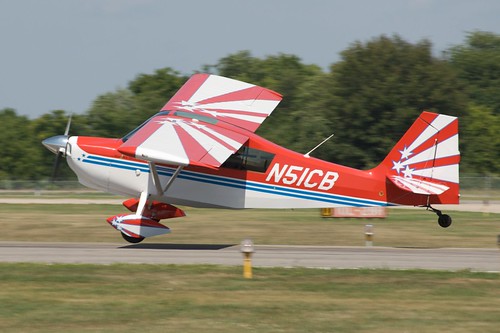 By Doug Daniel
By Doug DanielI was recently asked about the possibility of a wingtip strike when landing in a typical light plane like a Cherokee or a Cessna 172. Specifically, I was asked about how far the aileron control could be deflected without hitting the tarmac when one or both of the main landing gear is on the runway after landing at near stall speeds.
I will admit that I have never tried to hit the runway with my wing tip and I don't know anyone who has. However, it certainly can be done. Perhaps a better question is: what landing technique will guarantee that the wingtip does not strike the tarmac in a crosswind?
I want to talk about landing techniques in a really strong crosswind before I tackle the issue of wingtip strikes. After all, wingtip strikes are not a credible issue except in crosswinds that approach the airplane's crosswind limitations.
To make controlled crosswind landings, you should master the skill of pointing your airplane in the same direction that it moves over the ground. If the airplane is pointed in some other direction when you touchdown, the best you can hope for is abrupt side forces on your landing gear followed with a swerve as the airplane swings in the right direction. The worst is loss of directional control followed with a trip off the side of the runway, possible ground loop, nose over, wingtip strike, or all of the above
Pointing the airplane it the direction it moves is the most essential landing skill. It is not as easy as it sounds. And it certainly requires practice before it can be mastered. In a nutshell, here is how to do it:
Point the airplane in the direction that it travels by turning the nose with your rudder pedals alone. Move the airplane from side to side by changing your angle of bank with ailerons. Control airspeed or height above the runway by changing your pitch attitude with your elevator. This lets you keep your wheels pointed in the direction the airplane moves and keep your airplane directly over the middle of the runway. This is exactly where you should be when you land.
Landing in a crosswind, you touch the runway while cross controlled. This is a steady state condition. Your airplane is not rolling around its long axis. That is to say that it has a steady angle of bank. In a general aviation, production light plane, you cannot cross control far enough to touch the wing tip.
The technique that works best is to try to keep the downwind main wheel barely off the runway as long as possible after you have touched down with the upwind wheel. To hold the downwind wheel off, you must continuously increase aileron control defection until it reaches its limit. Eventually, as the airplane continues to slow down, the ailerons lose power and the other main wheel will settle onto the runway.
Finally in any well executed crosswind landing, the aileron control will be pushed to its limit. An important point here is, that just like any other aspect of good airmanship, you should move your controls smoothly and with the purpose of changing the airplane's attitude. A snap roll is the only situation where I deliberately move the controls violently.
Now, back to the subject: how might you strike a wingtip? I can think of two ways.
Suppose you suddenly and violently slapped the aileron control all the way to its limit. Two things would happen: the airplane would no longer be properly cross controlled, and it would start to roll. Now it is possible to strike the wingtip. In other words, you would have just fouled up a perfectly good crosswind landing. You would have put the airplane in a very difficult situation, one that would require a particularly skilled pilot to salvage. I don't recommend it.
The more likely situation is that you land wings level in a strong crosswind. That is to say, not cross controlled. Here, the airplane is crabbed into the wind and the wheels are not aligned with the airplane's path over the ground. Because the airplane is not aligned with its path through space, the wheels will generate a very strong side ways force on the undercarriage when they touch the runway. With luck, this results in a sideways skid. Just like in a car, if the wheels are far enough apart, the airplane skids until it either stops or straightens up. If the wheels are not far enough apart, you're unlucky. The airplane rolls over, striking the ground with its wingtip.
The lesson here is: use proper crosswind techniques and you will not need to worry about wingtip strikes.
Doug Daniel, long time flight instructor, invites you to visit http://www.FlyingSecretsRevealed.com/flying_questions/ for more flying articles like this one. You may also feel free to contact Doug by visiting his website.
Article Source: http://EzineArticles.com/?expert=Doug_Daniel
http://EzineArticles.com/?How-to-Walk-Away-From-All-Your-Crosswind-Landings&id=1768506




